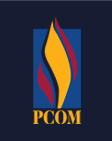Location
Philadelphia, PA
Start Date
1-5-2024 1:00 PM
End Date
1-5-2024 4:00 PM
Description
Introduction: Decompressive craniectomy is a pervasive treatment modality for malignant ischemic stroke and traumatic injury. Usage of dural substitute onlay during craniectomy closure is largely determined by provider preference. Complication rates and clinical outcomes associated with Lyoplant (Aesculap, Center Valley, PA, USA) onlay is currently not well characterized. Here, we examined the rate of complications and clinical outcomes in craniectomies performed with either Lyoplant or another dural substitute.
Methods: Patients undergoing cranioplasty following either ischemic stroke or traumatic injury at a single site were analyzed between December 2013 and June 2023. Mann-Whitney U tests and Fisher’s exact tests were performed to compare continuous and categorical variables. Significance level was 0.05.
Results: Of 60 patients, 20 (33%) had ischemic strokes, and 40 (67%) had traumatic injury. Forty-nine (82%) cranioplasty patients received Lyoplant while 11 (18%) received a different dural substitute (e.g., Bicol or Duraform). Mean EBL with and without Lyoplant was 118 ± 74 mL and 250 ± 91 mL respectively, which was significantly different (p=0.00011). Cranioplasty surgical case length was not significantly impacted (p=0.789) when using Lyoplant or another dural substitute. One-year follow-up GOS-E scores were not significantly different (p=0.762) between dural substitute groups. Time delay between craniectomy and cranioplasty was not significantly different (p=0.695) between dural substitute groups. Post-cranioplasty LOS was not significantly different (p=0.547) between dural substitute groups. CSF diversion rates were not significantly different (p=0.760) between dural substitute groups. Complications following craniectomy (Hematoma, Wound infection, Meningitis, Hydrocephalus) were not significantly different (p=0.095) between dural substitute groups.
Conclusion: Patients receiving Lyoplant onlay had similar operative and clinical outcomes compared to other dural substitutes. Further multivariate analyses can aid in clarifying the advantages and disadvantages of Lyoplant usage.
Embargo Period
7-1-2024
Included in
Clinical Outcomes and Complication Rates When Using Lyoplant Onlay Between Serial Craniectomy and Cranioplasty: A Single-Center Experience
Philadelphia, PA
Introduction: Decompressive craniectomy is a pervasive treatment modality for malignant ischemic stroke and traumatic injury. Usage of dural substitute onlay during craniectomy closure is largely determined by provider preference. Complication rates and clinical outcomes associated with Lyoplant (Aesculap, Center Valley, PA, USA) onlay is currently not well characterized. Here, we examined the rate of complications and clinical outcomes in craniectomies performed with either Lyoplant or another dural substitute.
Methods: Patients undergoing cranioplasty following either ischemic stroke or traumatic injury at a single site were analyzed between December 2013 and June 2023. Mann-Whitney U tests and Fisher’s exact tests were performed to compare continuous and categorical variables. Significance level was 0.05.
Results: Of 60 patients, 20 (33%) had ischemic strokes, and 40 (67%) had traumatic injury. Forty-nine (82%) cranioplasty patients received Lyoplant while 11 (18%) received a different dural substitute (e.g., Bicol or Duraform). Mean EBL with and without Lyoplant was 118 ± 74 mL and 250 ± 91 mL respectively, which was significantly different (p=0.00011). Cranioplasty surgical case length was not significantly impacted (p=0.789) when using Lyoplant or another dural substitute. One-year follow-up GOS-E scores were not significantly different (p=0.762) between dural substitute groups. Time delay between craniectomy and cranioplasty was not significantly different (p=0.695) between dural substitute groups. Post-cranioplasty LOS was not significantly different (p=0.547) between dural substitute groups. CSF diversion rates were not significantly different (p=0.760) between dural substitute groups. Complications following craniectomy (Hematoma, Wound infection, Meningitis, Hydrocephalus) were not significantly different (p=0.095) between dural substitute groups.
Conclusion: Patients receiving Lyoplant onlay had similar operative and clinical outcomes compared to other dural substitutes. Further multivariate analyses can aid in clarifying the advantages and disadvantages of Lyoplant usage.
